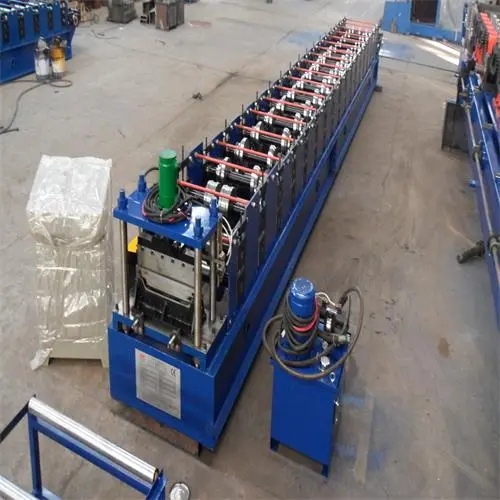
Steel Purling Roll Forming Machine Revolutionizing Construction
In the modern construction industry, efficiency and precision are paramount. One of the key innovations that have emerged to address these needs is the steel purling roll forming machine. This advanced piece of machinery has significantly transformed how structural components, such as purlins, are manufactured, leading to improved production rates and enhanced product quality.
Purlins are vital components in building frameworks, commonly used to support roofing and wall systems. They serve as horizontal supports, transferring loads from the roof to vertical structures like columns and walls. Traditionally, purlins were made from steel sections that required extensive fabrication, but the introduction of roll forming technology has streamlined this process.
The steel purling roll forming machine operates by continuously feeding a strip of steel through various rollers, which shape it into the desired purlin profile. This process not only ensures a high degree of accuracy but also allows for rapid production cycles. Unlike traditional methods, where each piece requires individual cutting and shaping, roll forming can produce long lengths of standard profiles, reducing waste and saving both time and labor costs.
One of the defining features of roll forming machines is their ability to create various shapes and sizes of purlins to meet specific design requirements. With adjustable settings, operators can easily switch between different profiles, enabling manufacturers to accommodate diverse project specifications without significant downtime. This versatility is particularly advantageous in a market that often demands customization to meet specific building codes or architectural designs.

In addition to manufacturing efficiency, the strength and durability of the purlins produced by roll forming machines are noteworthy. The process enhances the mechanical properties of steel by improving its strength-to-weight ratio. This means that structures can be built to be both lightweight and robust, a crucial consideration in modern construction where materials need to withstand various environmental conditions.
Another significant benefit of using steel purling roll forming machines is the reduction of material waste. Traditional manufacturing methods often produce excess scrap, but roll forming minimizes this by using continuous lengths of steel. Furthermore, advances in computer technology allow for precise control of the cutting and shaping processes, further optimizing material usage.
Economic considerations also play a vital role in the adoption of steel purling roll forming machines. The initial investment in such machinery can be substantial, but the long-term benefits often outweigh these costs. Increased production efficiency, reduced labor costs, and lower material waste contribute to a more profitable manufacturing process. Moreover, the durability and strength of the finished products can lead to reduced maintenance costs for builders and property owners.
In conclusion, the steel purling roll forming machine represents a significant advancement in the construction industry. It combines innovative technology with practical applications, making the production of purlins more efficient, cost-effective, and customizable. As the demand for sustainable construction practices and high-quality materials continues to rise, the roll forming machine will undoubtedly play a crucial role in shaping the future of building frameworks. By embracing this technology, manufacturers can improve their operations while simultaneously contributing to the overall quality and reliability of modern structures.